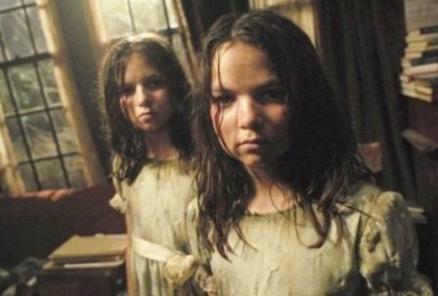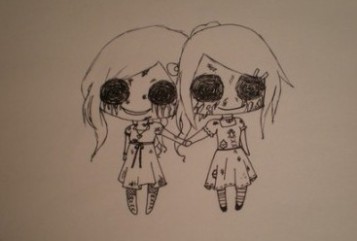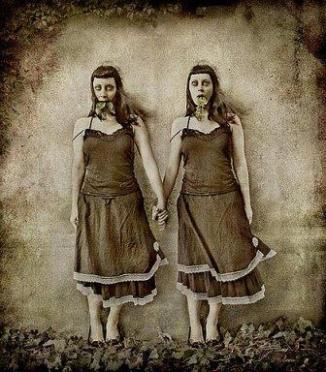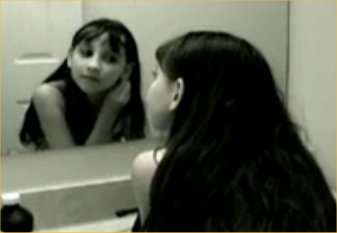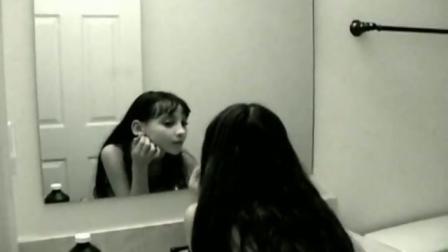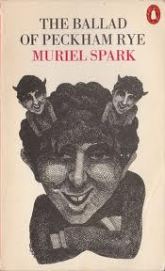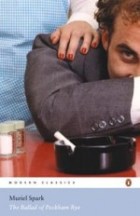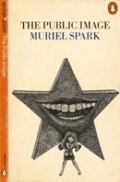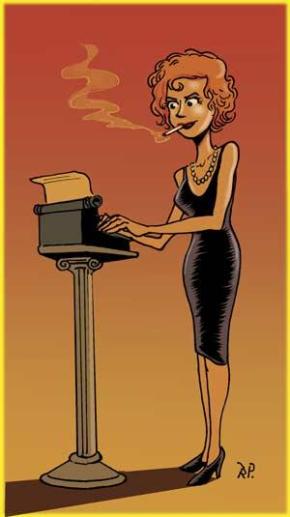
The text under discussion here is a comic strip, a short ‘verbo-visual’ narrative (Saraceni, 2000) that can either take the form of a self-contained unit such as Collins’ Treat or it can form part of a much larger narrative (Garry Trudeau’s Doonesbury). These strips are published daily or weekly in newspapers and their purpose is to amuse, hence their former nickname, ‘the funnies’. Treat is reproduced in full above (Appendix A), and again below (Appendix B) with numbered panels for ease of reference, and a glossary of key terms.

In spite of the centrality of focalisation as a concept in narrative theory, there is dissension amongst scholars as to the scope of this concept and whether or not it should include ‘aspects of cognition’ alongside more traditional considerations of purely visual perspective (Horstkotte and Pedri, 2011: 330). The argument presented here adopts Horstkotte and Pedri’s conception of focalisation as a ‘cognitive operation related to aspectuality [Palmer, 2004: 194-200] that subsumes the narrower optical view’ (2011: 332). In other words, focalisation, or the filter through which the storyworld is presented, comprises processes of perception and cognition that are inseparable: an object or event is not merely placed before the reader as a fact, it is perceived in a way that is peculiar to the perceiving consciousness. The concerns expressed by Horstkotte and Pedri (2011) relating to the dominance of the visual facet of focalisation at the expense of the cognitive are compounded when the text contains both visual and verbal elements, in which case the need is even greater for a more flexible approach. The perceptual facet of comics, or graphic narratives, obviously cannot be dismissed, but to restrict the analysis of focalisation in these texts to a description of ‘camera’ angles alone is to do them an injustice. In this essay, I argue that focalisation is realised in Collins’ comic strip in three different ways. First, the vectors created by line of gaze describe a transitivity which places the boy wearing the devil-horns in subject position. This transitivity is also demonstrated through a variation of shot/reverse-shot editing, a filmic technique which aligns the object observed with the observer’s visual perspective. Second, the reader is primed to accept the boy as focaliser by means of the reader’s knowledge of the conventions of the fairy-tale genre which is established early on as a parallel secondary narrative. Finally, the boy is identified as focaliser in the second tier through repeated instances of a particular panel representing a narratively significant ‘pregnant moment’ (Kukkonen, 2013a: 48-50).
Focalisation as a concept grew out of the need to differentiate between various competing narrative voices in purely linguistic texts (see Genette, 1980), and given the relative importance of focalisation in narrative theory, there is justification for exploring how this concept might operate in graphic narratives. The relatively recent boost in academic interest in comics coincides with an accelerated proliferation of multimodal texts to the point where the co-existence of the verbal and the visual is arguably creating ‘a new semiotic landscape’ (Saraceni, 2000: 5; see also McCloud, 1993: 58-59; and Goodman, 2007: 113-146). Kukkonen claims that comics provide a useful test case for the new transmedial narratology, or ‘the project of investigating how particular media constrain as well as enable storytelling practices’ (2011: 34), and Ewert’s sensitive analysis of the combined effect of the visual and the verbal in Art Spiegelman’s Maus showcases the contributory potential of such work to narratological studies. Ewert’s essay makes an eloquent case in favour of ‘a poetics of the graphic narrative’ (2004: 191), a framework which, though currently lacking, would greatly facilitate and enhance scholarly discussion. Practitioners such as McCloud and particularly Eisner laid solid foundations for future research in their own seminal publications, both of which, for example, discuss the different types of word/picture relationships occurring in graphic narratives (McCloud, 1993: 153-155; Eisner, 1985: 122-138). Saraceni adds ‘semiotic blend’ to this discussion, a word/picture combination in which verbal and pictorial elements acquire each other’s characteristics (Saraceni, 2000:43), exemplified in Treat by the moon in panel 1 which doubles as a full stop. Other occasional instances of semiotic blend in this text occur against a background of ‘mirroring, when the verbal and visual texts reinforce each other and can operate independently to tell the story’ (Saraceni, 2000: 43). I shall return to this point later in the discussion of focalisation and genre.
The first part of the analysis presented here focuses on the perceptual facet of focalisation and how this can be realised in a verbo-visual text. Kress and van Leeuwen apply Halliday’s work on ideational transitivity to the relation of objects in images (Halliday, 1994: 106-175), and they suggest that the interaction between objects can be ‘visually realized by vectors’ (Kress and van Leeuwen, 2006: 42). For example, the tail of a speech balloon in verbo-visual texts forms a vector between the character speaking and what was said, and the transitivity pattern in this case is that of the mental externalised process with a speaker and an utterance. In the second tier of Treat, a vector is formed by the boy’s eyeline as he looks at the head: the boy’s gaze and the direction of the vector travel left to right in accordance with the reading experience. Although the stylised depiction of the boy renders his expression enigmatic, the direction of his gaze is not in doubt because the physical position of the dot which represents his eye changes as he looks up and down. When he looks up at the old woman, his eye-dot shifts up and to the right (compare panels 15 and 16). The transitivity pattern here is a mental internalised perception process (or ‘reactional’ in Kress and van Leeuwen’s terms), with the boy as ‘senser’ (or ‘reacter’) and the head as ‘phenomenon’ (Kress and van Leeuwen, 2006: 67). The eyeline vectors establish the boy’s act of looking as the event of silent panels 13, 15 and 20. If a vector is a visual realisation of an action verb (Kress and van Leeuwen, 2006: 46), then the boy is the subject of that verb, and because the verb denotes an act of perception, the boy can be identified as the perceptual focaliser at this stage of the narrative.
As previously stated, this transitivity of senser and phenomenon is also signalled by a shot/reverse-shot sequence played out over panels 13 to 21 as the ‘camera’ switches back and forth between focaliser in mid-shot and focalised in close-up. Kukkonen notes that in shot/reverse-shot editing ‘readers can identify the middle image as being perceived from the perspective of the character’ (2013a: 49; see also Saraceni, 2000: 200 and Mikkonen 2008: 312). A shot/reverse-shot sequence usually incorporates the focaliser’s emotional reaction to the focalised and certainly the reader is invited to imagine the boy’s response to the gift offered. I shall argue in the sections to follow that the boy’s reaction is spread over a sequence of eight successive panels, thus requiring the reader to participate in this extended moment of indecision.
Before I discuss the playing-out of the boy’s reaction, however, it is necessary to introduce some genre-related considerations, which have already been briefly touched on. Genre schemas can be evoked through textual clues (Kukkonen, 2013a: 69), and in this particular case, the fairy-tale genre is activated in the witch-like imagery (the pointed hat, an old woman giving sweets to children) and, most importantly, in the traditional structure-of-three. There are three trick-or-treaters, each of whom is offered a ‘treat’. The first two are offered ‘Nice’ biscuits and the pattern is broken with the third child who is offered ‘a lovely life-destroying cursed head in a jar’. The convention of the structure-of-three dictates that the reader will be expecting this change and will no doubt have already seen panel 12 before commencing a more detailed reading: after all, the whole strip is viewable at a glance (see Eisner, 1985: 40-41). Nevertheless, the positioning of the head at the end of the first tier creates a pause between the offering of the gift and the boy’s reaction to it in panel 13 on the second tier, almost as if the tiers could be read like lines of poetry. The importance of the boy’s reaction is therefore structurally marked both in this pause and in the anticipated break in the pattern as dictated by genre. Narrative progression can be partly guessed at once the fairy-tale genre is active, and this brings the argument back to the word/picture combination of ‘mirroring’ mentioned earlier. Both the visual and verbal components of Treat seem sufficient on their own to tell the story; however, one must ask what is lost if, for example, the words are removed from the pictures. Speech and thought representation is an important facet of focalisation and the verbal component is vital ‘in constructing the sense of a mind’ (Mikkonen, 2008: 312). Here, the boy’s voice works in postmodern contradiction to expectations aroused by genre. Kukkonen notes that ‘[p]ostmodern fairy tales [can]…subvert readers’ expectations…by not following the narrative probabilities and modes of verisimilitude that genre decorum prescribes’ (2013a: 80). The subversion of expectations in Treat is twofold: first, in the boy’s obvious reluctance to accept the offered gift, and second, in his vocalisation of this reluctance. In traditional fairy tales, the narrator is usually the dominant narrative voice and fairy-tale characters are rarely allowed to speak for themselves. When they do speak, they express themselves only in bland or ritualised utterances and this convention no doubt stems from the oral origins of fairy tales which feature numerous formulaic and therefore memorable speeches. In Treat, the boy voices his disappointment that his gift is not also a biscuit both indirectly to the old woman and directly to his peers in the final panel. To summarise, the evocation of the fairy-tale genre primes the reader to anticipate that the third gift-offering will break the established pattern, and the third child will emerge as protagonist. The protagonist is not necessarily the focaliser, however: what singles the boy out as focaliser is his vocalised response to the ‘treat’ offered and the slow playing-out of his reaction in the panels of the second tier.
Both Eisner and McCloud devote entire chapters to the panel (Eisner, 1985: 38-99; McCloud, 1993: 94-117). The panel is ‘a portion…of the narrative, where something actually takes place and time’ (Saraceni, 2003: 7) and ‘panel arrangements…are used to imply temporal sequence’ (Kukkonen, 2011: 35). Each panel marks an indeterminate time-span which is dependent on variables both internal and external to that particular panel, including narrative context and reader input. For example, there is no dialogue to provide any indication of time-span in panels 13, 15 and 20, and the reader can determine for herself how much time passes. Panel shape and size adds another dimension to the illusion of narrative temporality and the removal of the panel’s border altogether can create the impression of unlimited space or infinite time (McCloud, 1993: 102), as seen here in panel 12 with the introduction of the cursed head. Panel shapes in Treat are clearly divided into groups, and these groupings reflect semantically-linked narrative moments: for example, the proffering and acceptance of the biscuits is rendered in panels 6 to 11, comprising two groups of three duplicated frames. Panels 1 and 22 are the same shape and size, thus inviting comparison, and the content of these panels reflects the major narrative change, that is, the boy’s acquisition of the head. In panel 1, the scene is an urban one, depicting human habitations picked out by street-lamps and lit from within. The street is lined with carefully-spaced trees and neatly-parked cars, and the trick-or-treaters stand on the doorstep, about to knock at the old woman’s door. In the final panel, the houses and cars are nowhere to be seen, but the visually dominant trees tower over the silhouetted figures of the children in what has become a horror-story setting.
Equally important to the structure of graphic narratives is the space between the panels, known as the gutter, and it is always present even if the panels are adjacent (Saraceni, 2003: 9). If each panel is the grammatical equivalent of a sentence (Eisner, 1985: 28), then the gutter is the space between one sentence and the next, and it is a space in which the reader infers all that is missing from the narrative: ‘just as you step across the gutter, your mind creates connections between the individual panels, by drawing inferences about how the action in the one can relate to the other’ (Kukkonen, 2013b: 10). As is the case with purely linguistic texts, the reader infers that which the narrative does not tell. In fact, Collins’ strip demonstrates unity of time in all but three places (between panels 1-2, 5-6 and 21-22), and it is here the reader uses real-world knowledge to fill the gaps. Nevertheless, the reader of Treat is required to perform only a minimal amount of inferencing to construct a coherent, meaningful narrative, for two reasons. First, the strip features a high level of visual repetition from one panel to the next, rendering it an enormously cohesive text: the repetition functions as an explicit marker of ‘relatedness’ (Saraceni, 2000: 101). Second, the movement between panels for much of the strip is what McCloud describes as a moment-to-moment transition, noticeably in the second tier when the boy’s indecision is played out in detail (1993: 70).
It is at this stage that the function of panels 7 and 10 becomes clear. If they were to be removed from the strip, the moment-to-moment transition of panels 6 to 8 and 9 to 11 would become action-to-action transitions depicting the offering of the biscuit and its acceptance, and the loss of panels 7 and 10 would not occasion any confusion on the part of the reader. However, far from being redundant, the function of these two panels is to emphasise the moment between the proffering and acceptance of the old woman’s gift, so that this moment can be extended over panels 13-20. The extension of this moment and the hesitation it depicts on the part of the boy clearly marks him as the text’s internal focaliser. Mikkonen notes that in ‘visual narratives we often see the mind in action from a focalised perspective’ (2008: 316, emphasis in original) and that is precisely the case here. As previously stated, the boy’s reluctance to accept the gift is played out over eight panels and this is a significant proportion in a text of only 22 panels: the moment between proffering and acceptance in this instance comprises just over a third of the whole strip (36%). This example of a ‘sustained continuing-consciousness frame’ (Mikkonen, 2008: 316) is a relatively straightforward feat for a short verbo-visual narrative such as the comic strip, but medium-specific constraints can curtail attempts to prolong internal focalisation over longer stretches of text.
In this essay, I have claimed that the boy wearing the devil-horns can be identified as the internal focaliser of the events of the second tier of Treat, and that this identification is made possible through a combination of factors. The perceptual facet of focalisation was explored in a discussion of the transitivity of the text created by eyeline-vectors, and a shot/reverse-shot sequence which coincides with the boy’s viewpoint. Saraceni notes that the perspective through which the relationships between characters and objects are conveyed has an equivalent function to deixis (2000: 203), and deixis is defined by Simpson in relation to linguistic texts as ‘features of language which function to locate utterances in relation to speakers’ viewpoints’ (1993: 13). The textual features discussed here locate the viewpoint as that of the boy. However, I argued earlier that the perceptual facet should be combined with the cognitive in order to fully encompass all that is implied by the concept of focalisation. Saraceni makes a case for a merger of the perceptual with the psychological because access is needed to a character’s mind in order to see what they see (2000: 172). The psychological facet is realised here in the playing-out of the boy’s reluctance to accept the gift offered in a drawn-out moment of narrative significance. Finally, I have coupled the perceptual and psychological facets of focalisation as evidenced in the text with the contribution brought to the narrative by the reader: that of the recognition of a secondary genre which informs the text and allows the reader to infer that the third child will receive a different gift. The reader can therefore anticipate in advance the boy’s role as focaliser.
List of references
Collins, S. Treat. Published in The Guardian on 26 October 2012. Available at http://www.theguardian.com/lifeandstyle/cartoon/2012/oct/26/2. Accessed 18 February 2016 at 18:22.
Eisner, W. (1985) Comics and Sequential Art. Paramus: Poorhouse Press.
Ewert, J. (2004) Art Spiegelman’s ‘Maus’ and the Graphic Narrative. In Narrative Across Media: The Languages of Storytelling. Lincoln: University of Nebraska Press, 178–193.
Genette, G. (1980) Narrative Discourse: An Essay in Method. Ithaca: Cornell University Press.
Goodman, S. (2007) Visual English. In Redesigning English. Abingdon: Routledge, 113–159.
Halliday, M.A.K. (1994) An Introduction to Functional Grammar. (2nd ed.) London: Edward Arnold.
Horstkotte, S. & Pedri, N. (2011) Focalisation in Graphic Narrative. Narrative 19(3): 330–357.
Kress, G. & van Leeuwen, T. (2006) Reading Images: The Grammar of Visual Design. (2nd ed.) London: Routledge.
Kukkonen, K. (2011) Comics as a Test Case for Transmedial Narratology. SubStance 40(1): 34–52.
—-2013a. Contemporary Comics Storytelling. Lincoln: University of Nebraska Press.
—-2013b. Studying Comics and Graphic Novels. Chichester: Wiley-Blackwell.
McCloud, S. (1993) Understanding Comics: The Invisible Art. New York: HarperCollins.
Mikkonen, K. (2008) Presenting Minds in Graphic Narratives. Partial Answers: Journal of Literature and the History of Ideas 6(2): 301–321.
Palmer, A. (2004) Fictional Minds. Lincoln: University of Nebraska Press.
Saraceni, M. (2000) Language beyond language: Comics as verbo-visual texts. PhD thesis. University of Nottingham.
—- (2003) The Language of Comics. London: Routledge.
Simpson, P. (1993) Language, Ideology and Point of View. London: Routledge.


